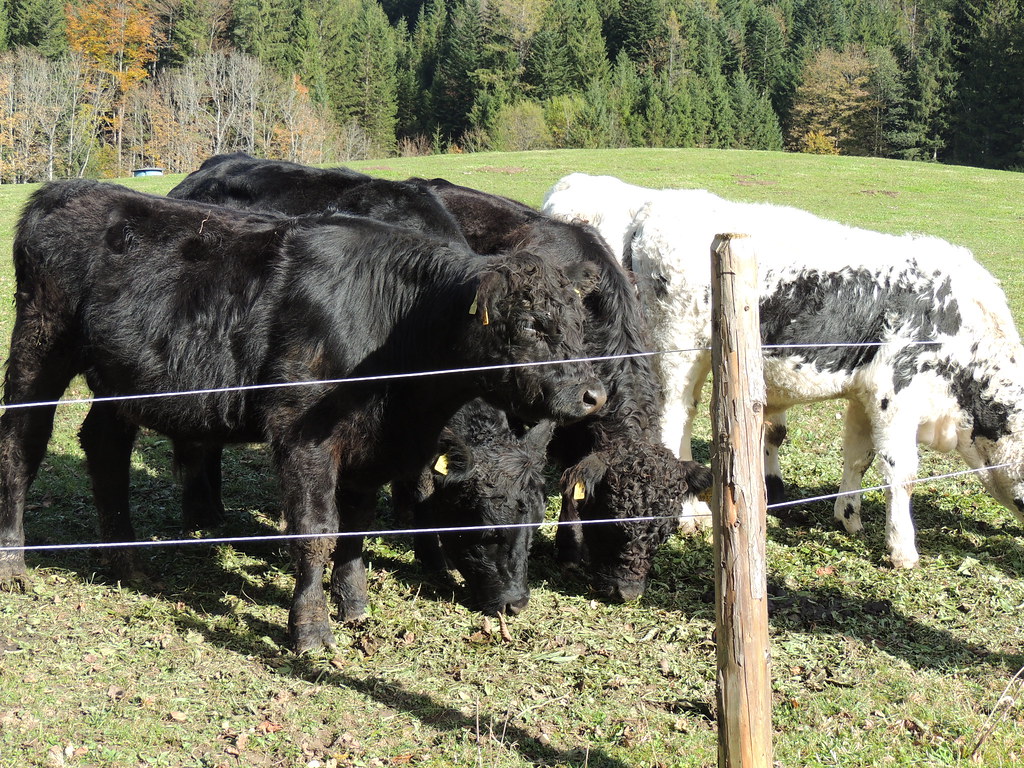The Powerful Symbolism and Meaning Behind the Ox

The ox has been a revered animal for millennia across many cultures and spiritual traditions. This hardy beast of burden has come to symbolize qualities like strength, abundance, determination and more.
In this blog, we’ll explore the extensive symbolic meanings behind oxen and cattle in mythology, culture, art and more. Read on to understand the deeper significance behind this humble cow relative.
Overview of Ox Symbolism

The ox epitomizes hard work. This bovine grazes peacefully, but once harnessed, it willingly helps farmers plow fields and haul heavy loads. No wonder that in manybelief systems, the ox came to embody earthy qualities like:
- Strength, stamina and perseverance
- Abundance through agriculture and fertility
- Peacefulness and tranquility
- Sacrifice and providing for the community
- Patience, temperance and discipline
These themes recur through ox-related myths and folklore across the world. But the specific symbolism varies fascinatingly between cultures.
Ox Meanings in Major Spiritual Traditions
Let’s analyze how oxen are honored in main spiritual frameworks globally. Understanding these cultural viewpoints gives greater insight into ox symbolism.
Ox Symbolism in Hinduism
In Hindu iconography, oxen (Nandi) hold an eminent position. Nandi the bull serves as the vahana (vehicle) of the god Shiva. Nandi also guards Shiva’s abode as the chief of all Ganas (attendants).
As Shiva’s steed, Nandi represents strength and devotion. His name means “one who brings happiness,” showing his sacred nature.
Lord Krishna, another major Hindu deity, also tended cattle in his youth. Tales of Krishna’s bovine hijinks contain mystical teachings too.
Overall, Hindus revere the ox for its:
- Connection to key gods like Shiva or Krishna
- Role in agriculture and nourishment
- Symbolism of fidelity and dutifulness
Chinese Ox Folk Beliefs
The ox (Niú) has been vital for China’s agrarian economy for ages. So it’s no surprise this animal features heavily in Chinese myth and zodiac symbolism.
Oxen in Chinese Mythology
The two most famous oxen in Chinese legend are mystical bovines credited with pivotal cultural innovations.
One is Baidi, the “White Ox” who inspired the mythical Yellow Emperor to create the first Chinese calendar.
The other is Kimú, the ox with the phonetic Chinese alphabet inscribed on his back, sent by the gods to the hero Cangjie. This allowed the creation of Chinese writing.
So in Chinese lore, oxen are heavenly creatures that brought calendars, writing, agriculture and more to people.
Ox Symbolism in the Chinese Zodiac
In the Chinese zodiac, those born in an Ox year are considered hardworking, honest and logical. But they can also be stubborn, conservative and quarrelsome.
So the ox here represents diligence and reliability but also resistance to change and occasional anger outbursts!
Oxen in Chinese Art
Cattle motifs recur through Chinese arts like pottery, jade carvings or New Year prints:
- Bronze ox bells were buried in tombs to guide the dead to the afterlife
- Ceramic oxen symbolized farming and fertility
- Jade ox pendants signified refined nature and temperance
- New Year ox images conveyed hopes for prosperity
So in Chinese culture, oxen represent:
- Farming and nourishment
- Family devotion
- Honest yet stubborn nature
- Artisanship and Chinese cultural identity
Egyptian Bull Cults
In ancient Egypt, bull cults that worshipped Apis, Mnevis and possibly Hapis thrived for centuries.
Apis was a sacred bull deity incarnating the soul of Osiris, god of fertility and the dead. The Apis bull’s attributes included:
- Black coat with white diamond blaze
- Sphinx-shaped lump on his back
- Crescent moon shape on side
- Ability to interpret dreams/omens
When an Apis bull died, it was mummified and buried with grandeur. Its soul passed into a calf that would be the next living Apis.
So Apis embodied the Egyptian belief in gods incarnating as animals, death/rebirth cycles and omens. He represented supreme bovine power, fertility and divinity.
Ox Symbolism in Christianity
The Golden Calf
Infamously, in the Old Testament, Aaron and the Israelites built a golden calf idol when Moses went to Mount Sinai. This false idol provoked God’s wrath for rejecting His true divine image.
So the golden calf is a Biblical symbol of idolatry – creating ‘gods’ in one’s own image rather than worshipping the one true God.
Jesus as the Sacrificial Lamb
In the New Testament Gospels, John the Baptist declares Jesus is the “Lamb of God” (Agnus Dei) upon seeing him.
The image of Jesus as the sacrificial lamb who dies for humanity’s sins evokes echoes of oxen/cattle sacrifices in the Old Testament.
So while oxen have ‘false god’ connotations in parts of the Bible, Jesus as the Lamb of God transforms cattle symbolism to represent spiritual salvation.
The Golden Ox in the Book of Luke
Oddly, in Luke 15, Jesus narrates a parable featuring a prodigal son who steals his inheritance to the party. When the son returns penniless, his overjoyed father (symbolizing God) kills a fatted ox calf to celebrate, saying:
“For this son of mine was dead and is alive again; he was lost and is found.’ So they began to celebrate.”
(Luke 15:24)
Here, the fatted ox calf represents bounty, forgiveness and unconditional fatherly love. Very different to the ‘false god’ Golden Calf!
Additional Cultural Ox Symbolism

Beyond the major world religions, oxen hold fascinating symbolic meanings in tribal cosmologies too. Let’s analyze a few examples.
Celtic and Druid Ox Beliefs
The ancient Celts had many cattle gods and bull cults, like the cattle god Tarvos Trigaranus pictured with three bull heads.
Some researchers link the mythic Celtic Aurochs (wild European cows) to Irish tales of magical cattle. These legendary beasts had traits like:
- Constantly replenishing milk
- Meat that could feed armies yet stayed intact
- Dead Aurochs restored to life the next day
So in Celtic thinking, cattle were supernatural providers linked to sustenance and revival.
Druids may have revered real Aurochs for their hunting rites too. Skeletal remains show Aurochs skulls were often perched in Celtic houses, possibly for spiritual reasons.
Native American Buffalo Lore
For tribes like the Lakota, the buffalo (Tȟatȟáŋka) was a sacred being that literally sustained Native life on the plains.
Buffalo gave the Lakota food, clothing, tools from bones, transport via Travois pulled hides and more. Without buffalo, survival was impossible.
So unsurprisingly, Tȟatȟáŋka was central to Lakota myth. The White Buffalo Calf Woman delivered their Seven Sacred Rites. Buffalo dances honored the herds’ spirits to ensure they offered themselves to hunters.
In Native American culture then, buffalo/bison ox relatives represent:
- Sacred sacrifice to sustain the tribe
- Abundance and providence
- Tribal identity, rites and dances
- The complex link between humans, nature and food
San Bushmen Trance Cattle Meaning
The San Bushmen of southern Africa traditionally enter trance states via highly rhythmic dancing during rituals. Interestingly, they may ‘become’ an animal like an ox or giraffe during trance.
What does ‘being’ an ox mean here? According to research, in this shifted San consciousness:
- Oxen represent nurturance, calm power, and the community
- Their rhythmic walk maps onto trance-induced altered heartbeat/breathing
- Returning from ox identity teaches how to find roots in hardship
So for San Bushmen, ‘being’ an ox inspires spiritual lessons on community ties, survival, and transcendence.
Ox Meanings in Mythology and Folk Tales

Looking beyond standalone spiritual traditions, oxen and cattle fill folk tales worldwide too. Let’s analyze some compelling mythical ox archetypes.
Oxen Symbolizing Hidden Divine Nature (cont.)
- Väinämöinen’s Ox in the Kalevala: The Finnish hero Väinämöinen receives an ox named Hiisi from the goddess of death. This ox has superior strength and plowing abilities.
- The Mahabharata’s Shyam Varna: A coal-black ox helps the Pandavas succeed in battle by disguising itself among bloody elephant and horse corpses before returning to its true divine form.
Ox Leaders and Kings
Various myths present oxen and cattle in leadership roles, including:
- Audumla the Primeval Cow: In Norse mythology, Audumla is the eldest cow whose milk nourished the frost giant Ymir, progenitor of all giants and gods.
- The Copper-Colored Mountain: This Russian fairy tale features a mighty copper ox who rules a rich kingdom inside a mountain, with twelve herds of cattle and twelve wise rams acting as courtiers and advisors.
- The Glass Mountain: In this Slavic story, oxen carry heroine Elena the Fair up a glass mountain to access a sisterhood of warrior women at the realm’s peak.
So mythic ox leaders represent primal cosmic forces, wealth, and guardianship of female power.
Oxen Transforming into Other Animals
Shamanic transformation myths feature magical cattle who shift into different beasts, like:
- Airmid’s Oxen Becoming Birds: The Irish healing goddess Airmid’s twin oxen turn into different birds over a year-long cycle.
- The Yak Who Became a Dragon: A Tibetan Buddhist tale of a golden-nosed ox transforming into a dragon to control weather patterns and avert disaster.
Cosmic Oxen
Some mythic cattle are nothing less than cosmic beings shouldering great loads:
- The World-Supporting Giant Hrimfaxi: In Norse legends, the giant ox Hrimfaxi circled the world pulling night’s darkness behind him.
- Prishnigu the Hindu Cosmic Bull: Prishnigu allowed the Earth goddess Bhudevi to rest on each of his four horns in cycles lasting billions of years.
Ox Archetypes and Symbols in Dreams
Our analysis above shows oxen represent perseverance, sacrifice and hidden power. What do they mean in dreams though?
Seeing bulls or oxen in dreams often symbolizes:
- Overcoming obstacles through effort
- Achieving stability through well-paced hard work
- Awakening one’s strong yet gentle side
- Breakthroughs arising from patience
More specifically:
- Riding an ox: Taking deliberate action towards your ambitions
- Being chased by an ox: Fleeing from duties and obligations
- Sacrificing an ox: Making amends through sacrifice
- Talking ox: The need to pay attention to your Patient Inner Voice
So in dreams, oxen cue us to reflect on aligning effort, purpose and tranquility to reach goals.
Decoding Ox Imagery in Tattoos and Jewelry
Today ox motifs show up frequently in modern jewelry and tattoos too as symbols of:
Ox Tattoos
- Power and fortitude – especially ox head tattoos
- Wealth and abundance – ox horns and hooves signify prosperity
- Determined hard work – ox pulling cart or plow tattoos
Ox Jewelry
- Strength bracelets with ox heads or horns
- Good luck ox charms for fertility, wealth, health
- Zodiac ox pendants for those born in Ox years
So whether in body art or jewelry, the ox retains its age-old symbolic punch!
Conclusion: Key Takeaways on Ox Meaning
We’ve covered immense ground exploring ox significance across faiths, myths and culture. Let’s recap core meanings:
- Strength, Stamina and Perseverance: Oxen represent tremendous power – whether symbolically plowing fields tirelessly or wearing away obstacles with their horns
- Abundance and Nourishment: As essential farm animals, oxen provide sustenance, fertility and prosperity
- Sacrifice and Service: From Christ’s ‘Lamb of God’ analogy to San Bushmen’s trance ox identification, oxen model community duty and self-transcendence through sacrifice
- Hidden Divinity: Mythic oxen often conceal stellar cosmic powers and divinity behind humble appearances
- Stubbornness – The flip side to the determined ox archetype is unwanted obstinacy and rage as in the Chinese zodiac
Whether as divine mount, mythic metaphor or real working animal, oxen perfectly capture the yin-and yang balance between gentle strength and furious force.
Their symbolic richness explains why the iconic ox continues to steer human imagination centuries later!




